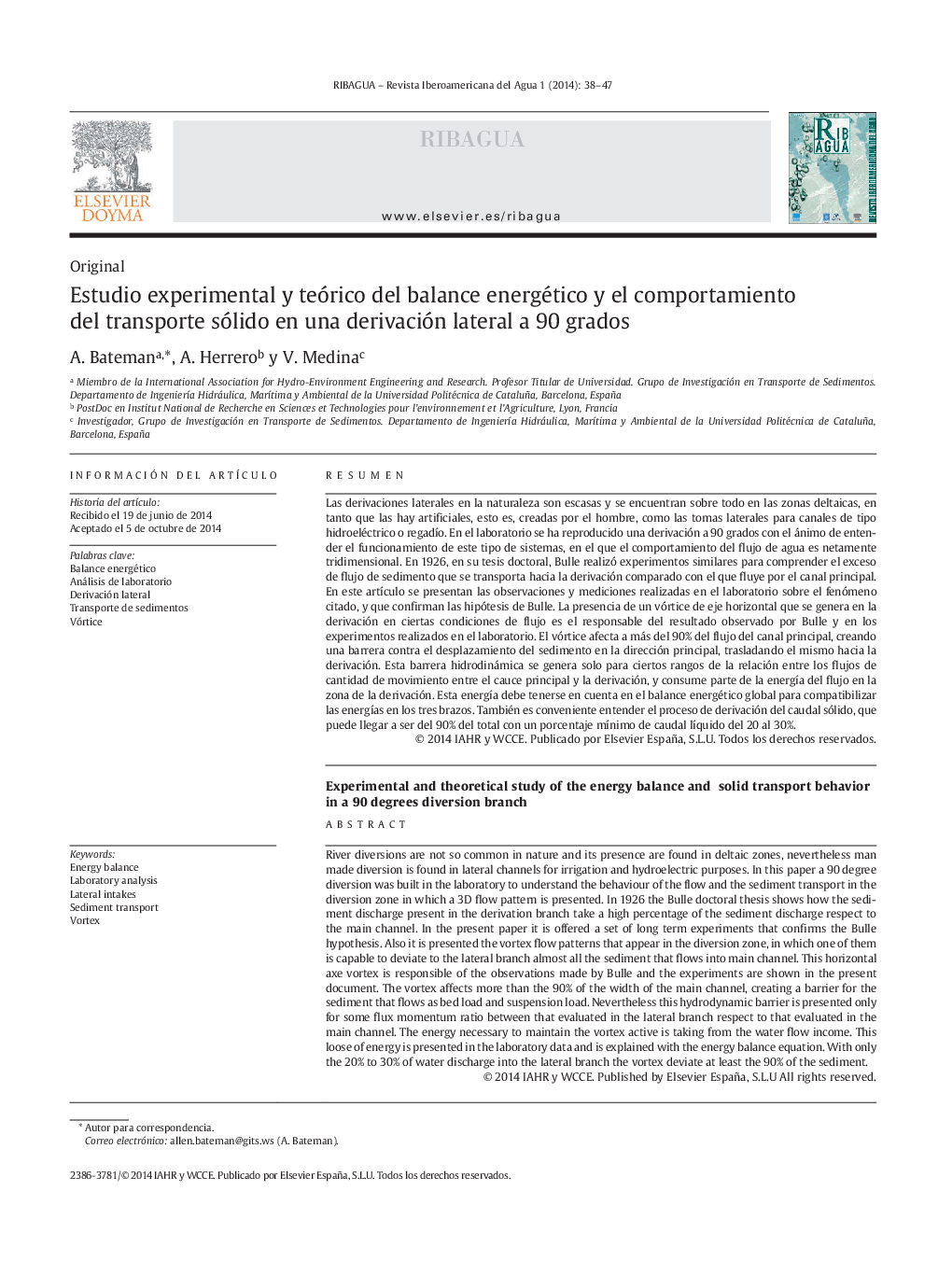| کد مقاله | کد نشریه | سال انتشار | مقاله انگلیسی | نسخه تمام متن |
|---|---|---|---|---|
| 1727822 | 1015493 | 2014 | 10 صفحه PDF | دانلود رایگان |

ResumenLas derivaciones laterales en la naturaleza son escasas y se encuentran sobre todo en las zonas deltaicas, en tanto que las hay artificiales, esto es, creadas por el hombre, como las tomas laterales para canales de tipo hidroeléctrico o regadío. En el laboratorio se ha reproducido una derivación a 90 grados con el ánimo de entender el funcionamiento de este tipo de sistemas, en el que el comportamiento del flujo de agua es netamente tridimensional. En 1926, en su tesis doctoral, Bulle realizó experimentos similares para comprender el exceso de flujo de sedimento que se transporta hacia la derivación comparado con el que fluye por el canal principal. En este artículo se presentan las observaciones y mediciones realizadas en el laboratorio sobre el fenómeno citado, y que confirman las hipótesis de Bulle. La presencia de un vórtice de eje horizontal que se genera en la derivación en ciertas condiciones de flujo es el responsable del resultado observado por Bulle y en los experimentos realizados en el laboratorio. El vórtice afecta a más del 90% del flujo del canal principal, creando una barrera contra el desplazamiento del sedimento en la dirección principal, trasladando el mismo hacia la derivación. Esta barrera hidrodinámica se genera solo para ciertos rangos de la relación entre los flujos de cantidad de movimiento entre el cauce principal y la derivación, y consume parte de la energía del flujo en la zona de la derivación. Esta energía debe tenerse en cuenta en el balance energético global para compatibilizar las energías en los tres brazos. También es conveniente entender el proceso de derivación del caudal sólido, que puede llegar a ser del 90% del total con un porcentaje mínimo de caudal líquido del 20 al 30%.
River diversions are not so common in nature and its presence are found in deltaic zones, nevertheless man made diversion is found in lateral channels for irrigation and hydroelectric purposes. In this paper a 90 degree diversion was built in the laboratory to understand the behaviour of the flow and the sediment transport in the diversion zone in which a 3D flow pattern is presented. In 1926 the Bulle doctoral thesis shows how the sediment discharge present in the derivation branch take a high percentage of the sediment discharge respect to the main channel. In the present paper it is offered a set of long term experiments that confirms the Bulle hypothesis. Also it is presented the vortex flow patterns that appear in the diversion zone, in which one of them is capable to deviate to the lateral branch almost all the sediment that flows into main channel. This horizontal axe vortex is responsible of the observations made by Bulle and the experiments are shown in the present document. The vortex affects more than the 90% of the width of the main channel, creating a barrier for the sediment that flows as bed load and suspension load. Nevertheless this hydrodynamic barrier is presented only for some flux momentum ratio between that evaluated in the lateral branch respect to that evaluated in the main channel. The energy necessary to maintain the vortex active is taking from the water flow income. This loose of energy is presented in the laboratory data and is explained with the energy balance equation. With only the 20% to 30% of water discharge into the lateral branch the vortex deviate at least the 90% of the sediment.
Journal: RIBAGUA - Revista Iberoamericana del Agua - Volume 1, Issue 1, 2014, Pages 38–47